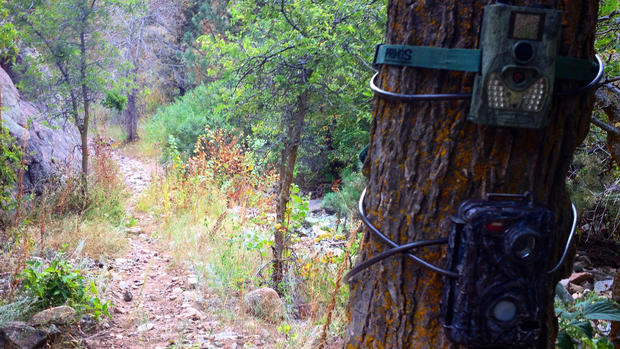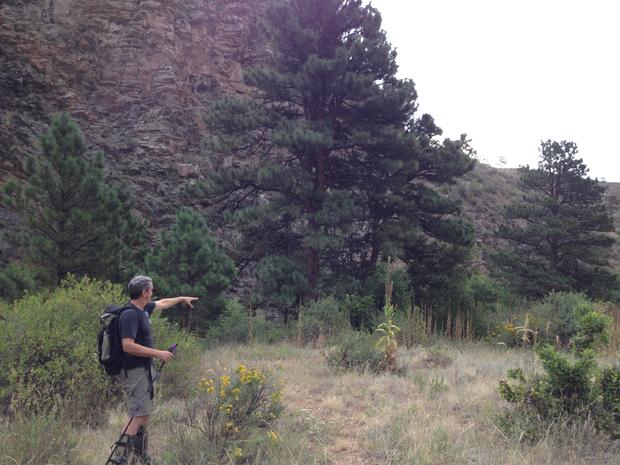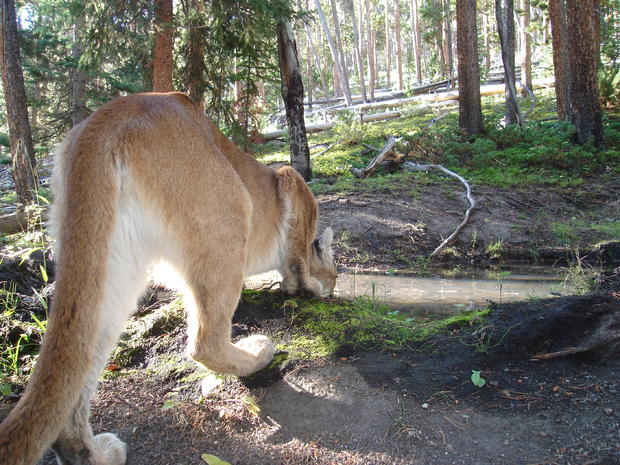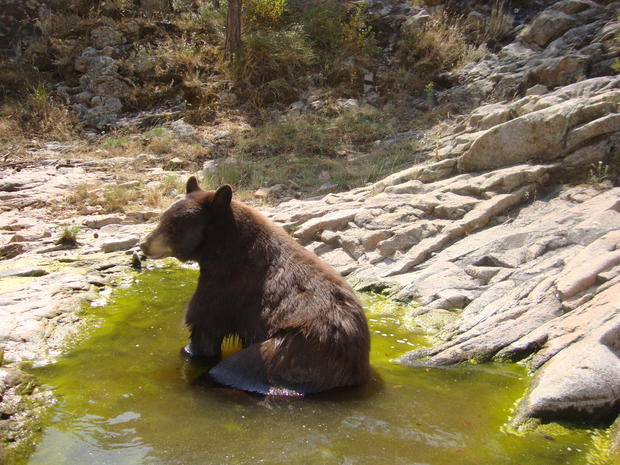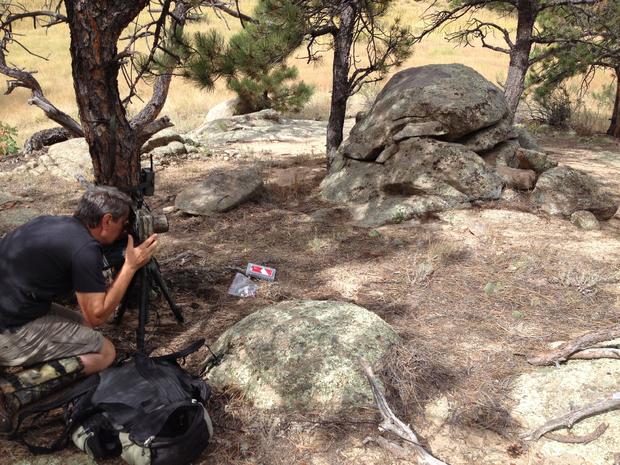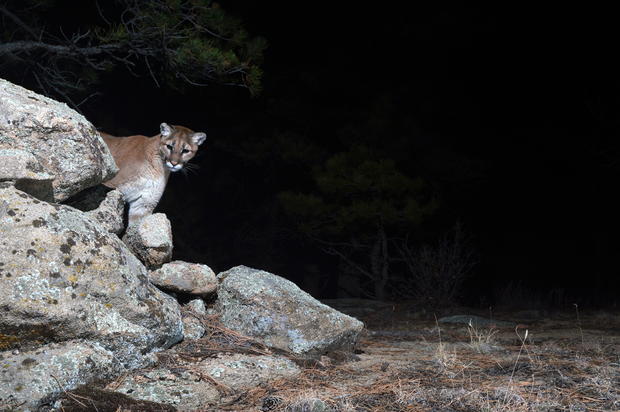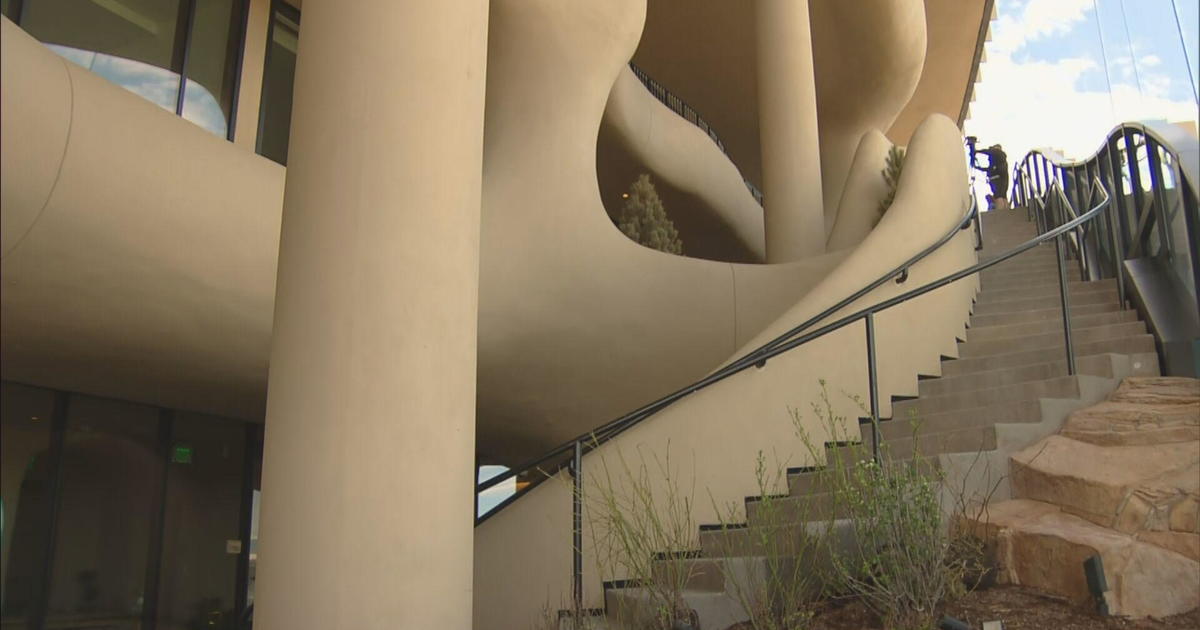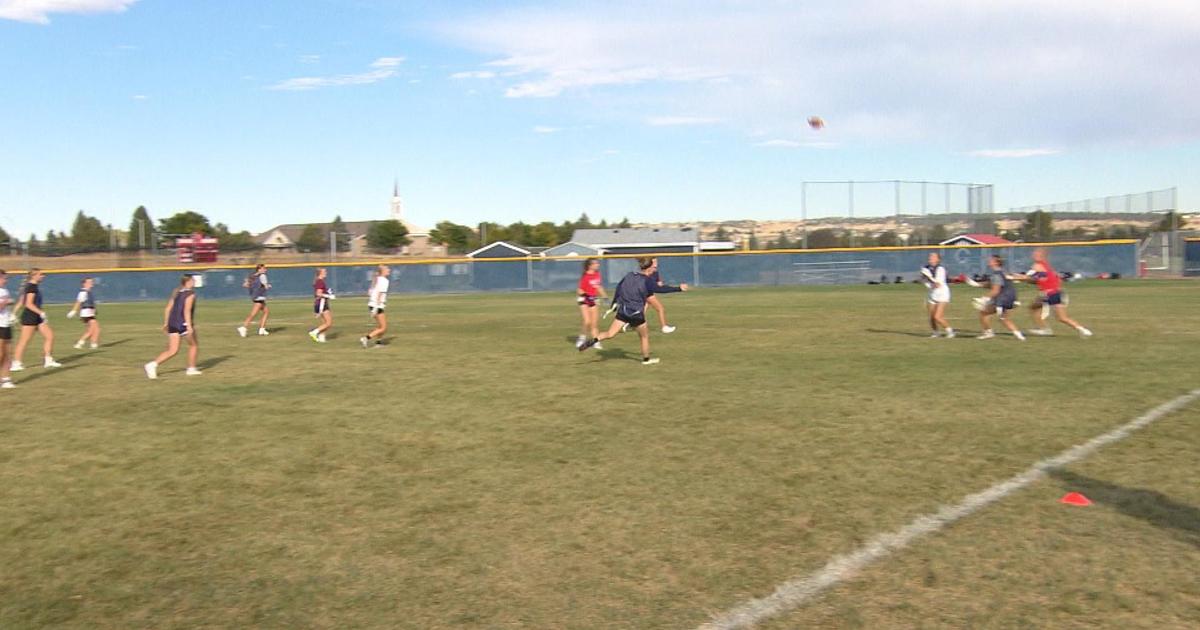Peering Into The Secret Lives Of Mountain Lions Through Wildlife Cameras
By Heather Sadusky
LOVELAND, Colo. (CBS4) - Through the gulch, over the mountain's grassy saddle, and just off the trail is what appears to be an unimportant bed of pine needles between trees. This is where David Neils captured the photograph of a lifetime.
Neils has been perfecting his hobby of setting trap cameras for over a decade, learning the behavior of animals and working with various lighting to capture high quality images. He's going on his tenth year working on untouched property of Sylvan Dale Guest Ranch, which he calls the best in all of Colorado for mountain lions.
Mountain lions are known for being secretive, making them difficult to study. Observations are rare, but understanding their behavior is key for management and conservation. Enter remote wildlife cameras.
Attached to trees, mounted on rocks, or camouflaged as bark, these cameras are able to capture the animals in their natural habitat, without human interference.
An infrared sensor will detect lifeforms, and the addition of movement triggers the camera. Some hold simple memory cards that are switched out when checked, others work through cellular signal and email photos as they're taken. The trick, though, is where to place them.
Neils has spent years trying to narrow down the wilderness of Colorado to the handful of locations that wildlife, and mountain lions in particular, frequent. He's identified patterns of predators down to the boulder, and simply knows what they prefer.
Predators like edges. The fringe of a habitat is the perfect spot to observe and to smell, ideal for hunting. On the fringe of a meadow or a canyon or a river, the wind typically blows toward a predator, giving it the ability to smell prey without physically searching for it.
Neils said he once saw the marks where a mountain lion had been lying in the middle of a dried gulch, where the valley pinches, hunting with its nose as the wind poured through the canyon.
Similar to edges, wildlife congregate at topographic pinch points. These are parts of the landscape where animal traffic has no other choice but to pass through a specific area. Either manmade, such as a canal, or natural features, such as a rock formation, can create a pinch point where bears, deer, mountain lion, bobcat, elk, and everyone else must pass through. These narrows are prime for wildlife cameras.
Animals prefer trails just as much as humans do, I'm told. Neils points out that a mountain lion walking the trail of a gulch gets a wide view in addition to the funneling wind bringing all sorts of smells. He says, "the more pronounced the topography, the more pronounced the air flow coming down the gulch."
There are also inter-species connections to look for. Neils says he has found a link between grasshoppers and mountain lions. When grasshoppers first appear in the spring, they're limited to a slope with plentiful sunlight. This attracts turkeys, which gorge on the grasshoppers and are inescapably concentrated on that same slope. So it made sense when Neils found mountain lion tracks everywhere in the muddy trails near that turkey-covered slope.
Even so, "I didn't realize that until about three years of hiking here," he said.
Now, when he sees the first grasshopper of spring, Neils knows to set his camera traps for the lions.
Limited water is another thing Neils looks for when setting a remote wildlife cam. When the creeks dry up, only a few puddles remain, drawing all wildlife to that single location. Neils has captured bears, deer, skunk and mountain lions coming through the location of a pond, and even a golden eagle taking a bath.
The area is set up like a photography studio, with a flash in the tree and multiple cameras looking at the pond from various angles and heights. On the day we checked those surrounding the rocky puddle, a bear had come through the day before and taken a bath. A skunk also stopped by.
Once you've identified the magic spot, getting the animal to stay put or place itself in exactly the right spot to get its picture taken is another matter.
After doing this for so long, Neils says, "I've become kind of a background snob." Not only is he hoping to capture an animal, but he wants it to look good. And the setting can be manipulated to get those beautiful images.
Cats are curious creatures, so Neils takes advantage of this by stringing a white feather in a strategic location that a mountain lion can't resist investigating. He'll sometimes include an audio device that produces bird sounds, set to go off only at night and with certain frequencies to attract predators.
Rock piles and trees are popular with predators because they serve as marking posts. In one camera location, Neils stacked some rocks into a mound to produce a scent post. It's irresistible, whether for the opportunity to mark it or the urge to smell, and where someone stops, the camera snaps.
In one of Neils' favorite camera positions, a natural rock lounge sits on the meeting of a forest and meadow, where predators can hide while watching deer and also pick up the scents from the wind flowing over the ridge.
The cameras are manually focused, the flashes precisely placed, the enticing extras set, and of course, "there is some luck involved."
In learning where to set the cameras, Neils has also learned a lot about animals' behavior. He says, "One of my questions is: how are wildlife using this space?"
Much of what he captures is available on his website, and accessible to the public. Neils will send any images he captures of collared or tagged animals to Colorado Parks and Wildlife, and National Geographic has reached out to use his images.
However, Neils also says he often leaves with more questions than answers. One winter he came upon a snowy meadow covered in bobcat tracks. He said there was a print in every square foot, as if they were playing.
The mystery is part of the attraction for Neils, who works to share his hobby with students, conservation projects, and fellow camera trappers.
He highlights the beauty of getting to know a place, which means after 10 years he knows when to expect mountain lions in the fall, where predators travel, and how grasshoppers can be indicators.
Being familiar with your surroundings, observing the change, and understanding patterns can yield valuable information says Neils. He believes capturing wildlife through remote cameras is work that can be done by anyone, and is a hobby that can inspire conservation. And it sure makes for some beautiful images.
David Neils and his wildlife cams are available for conservation work. More information can be found on his website.
